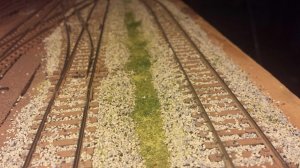bklynman01
Active Member
So I'm modeling a coal mine that runs up the side of a mountain to the mine in a switchback design. The story in the layout is that the coal mine is the oldest part of the town, and the railroads were built basically to serve it.
That being said, the rail line leading up to the mine should be fairly worn and in need of serious maintenance. The rest of the layout is code 100, so I could just use code 80 or 55 and hand lay it poorly to make it look rough.
So here's the request for advice part...
What would you guys do?
That being said, the rail line leading up to the mine should be fairly worn and in need of serious maintenance. The rest of the layout is code 100, so I could just use code 80 or 55 and hand lay it poorly to make it look rough.
So here's the request for advice part...
What would you guys do?


